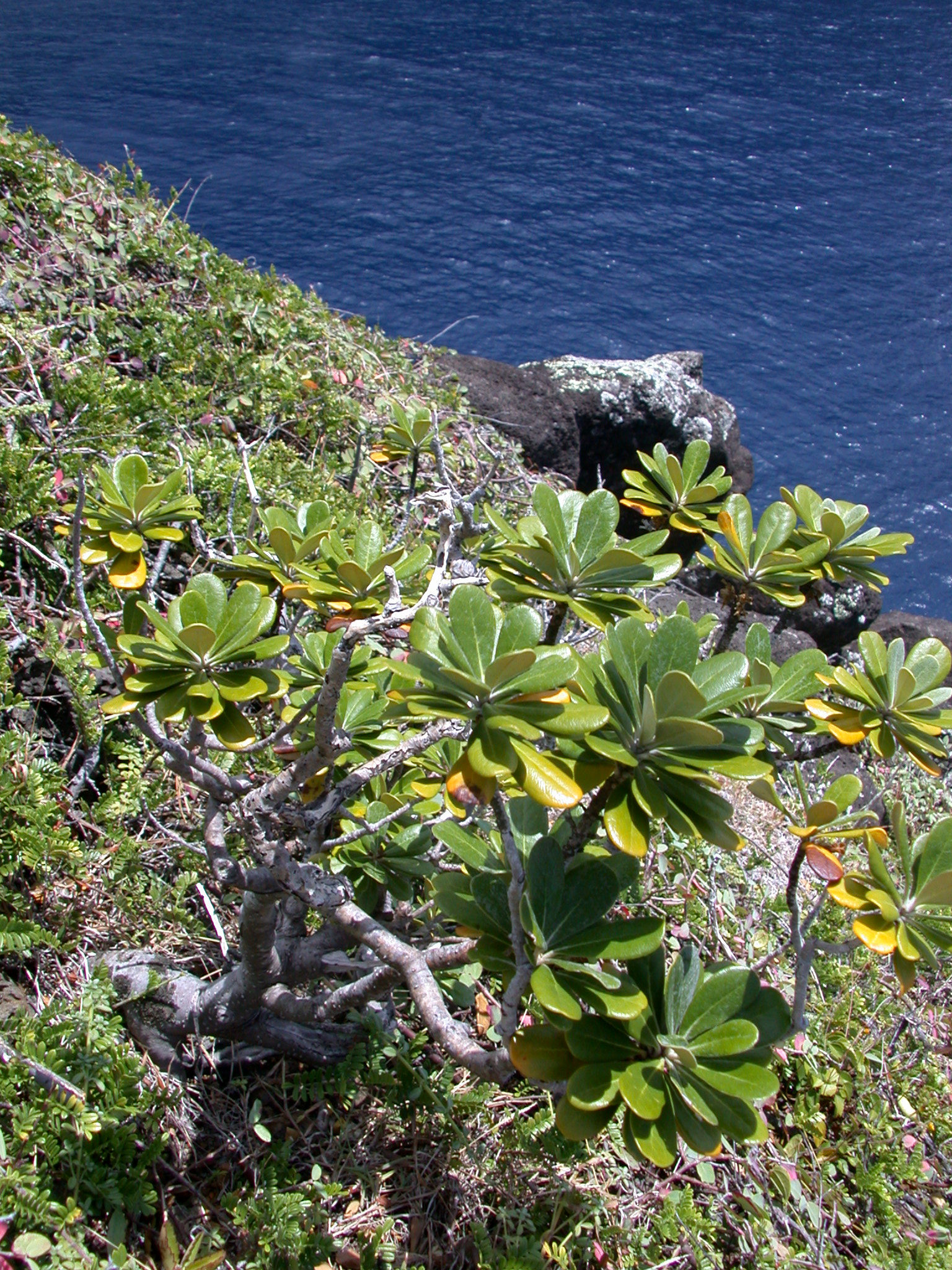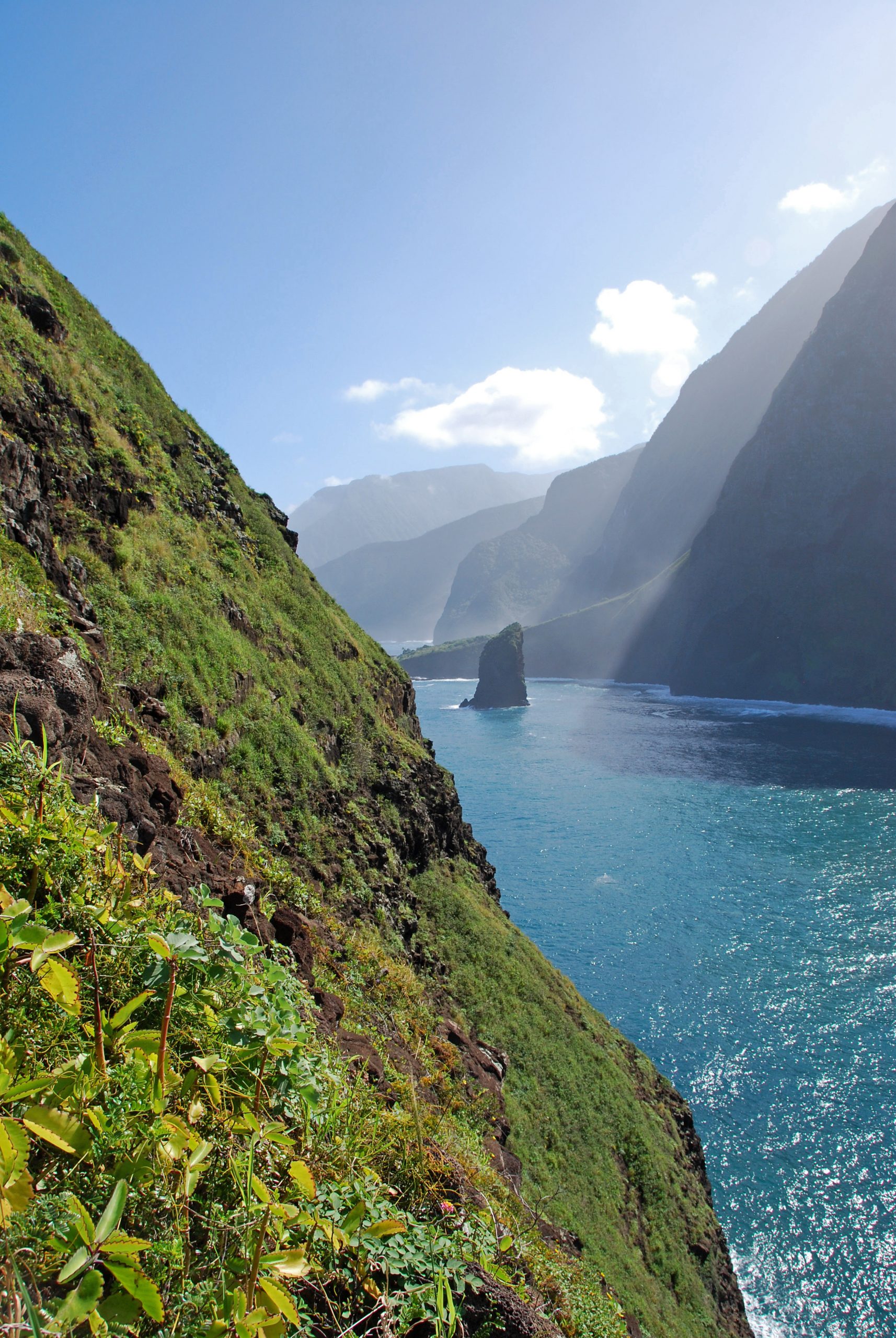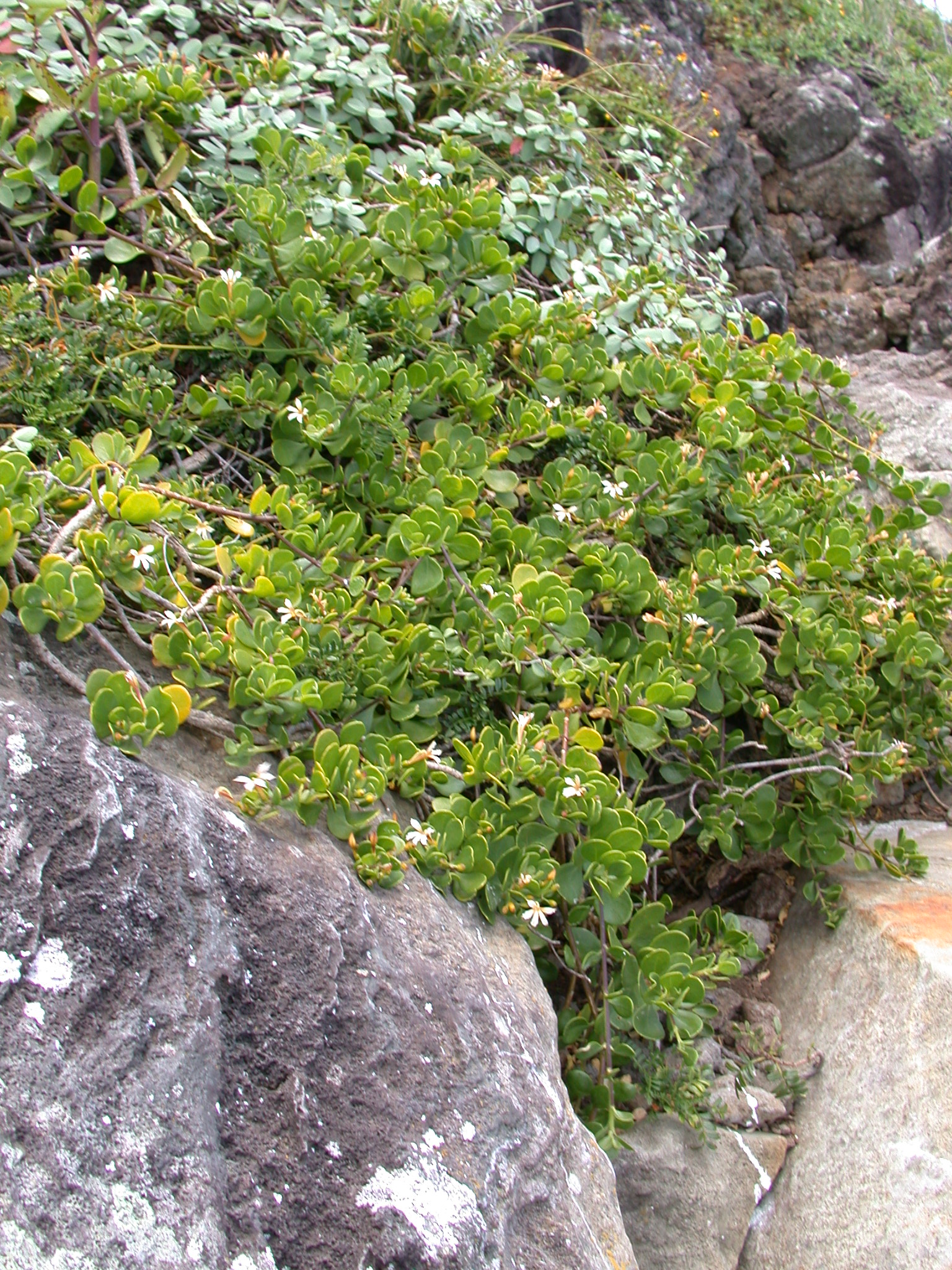Beyond the Islet – Integrated Conservation in Hawaii
On a small rocky island, or more accurately, an islet, jutting up off the shore of Moloka’I, eight dwarf Naupaka (Scaevola coriacea) plants cluster together at the very top. It is the second largest population of this endangered species.
Lower down on the southwestern ridge of the same islet clings a small population of shrubs of the critically imperiled Ho’awa (Pittosporum halophilum). The population consists of one male plant and one female plant.
The islet is called Okala, located off Moloka’i and managed as part of the Kalaupapa National Historic Park (NHP), and it has been a safe haven for these plants for a very long time. But that may not always be the case, as even such isolated islets are not immune to threats like nonnative plants and climate change. The structure of the islet itself may contribute one threat: landslides have killed several of the known Ho’awa plants on other islets, and could impact the two here. Fortunately, National Tropical Botanical Garden (NTBG) is working with the National Park Service (NPS) towards the conservation of both species.
Kalaupapa NHP, the majority of which is located on a peninsula of Moloka’i below steep cliffs, is known for its isolation. This trait was forced on sufferers of Hansen’s disease (commonly known as leprosy), but also served Hawaiian populations as well for hundreds of years before that. And now the park’s isolation, and visitor limits, keep tourism down, the added isolation of the park’s islets off the peninsula’s shore have helped keep the small populations of Ho’awa and dwarf Naupaka going. However, the plants’ presence was not always known or recognized.
Vegetation surveys helped locate these special populations; surveys characterizing vegetation have been a key part of the conservation work NTBG has done for Kalaupapa NHP. Vegetation surveys increase the knowledge of vegetation community for land managers and restoration ecologists, but also present opportunities to find rare plants and make important collections. Conducting a vegetation survey on the rugged islets of Moloka’i is no easy feat, but Kenneth Wood has proved adept at the task. It was while conducting one such survey back in 2006, that he collected cuttings from each of the dwarf Naupaka on Okala islet.
The cuttings of the eight new dwarf Naupaka plants not only provide conservation for those individuals, but also provide new genetic material to study and propagate for reintroductions. Upon his return to Kauai, Kenneth stopped by the home of NTBG propagator Michael DeMotta to inform him of his find. Recognizing the conservation significance of the cuttings, Michael immediately placed the plants in the mist house of his home nursery and began attempting to root as many of the invaluable cuttings as possible. His diligence was rewarded – getting 100% rooted. They were able to share their success with Kalaupapa NHP when the Park’s propagated material died off in 2009.
Michael DeMotta has also been successful propagating Ho’awa, with the species in turn finding success in horticulture and in coastal restoration. Thirteen of the 20 known naturally occurring individuals have been grown from seed collections – including the two occurring on Okala islet. Its ability to withstand salt spray, as its Latin name implies (P. halophilum: halo=salt, phil=love), makes it a great addition to the NPS’s coastal restoration projects within Kalaupapa NHP. In fact, both Ho’awa and dwarf Naupaka are important components of restoration being undertaken at the park as the land managers model their restoration efforts on Pritchardia coastal forests – a plant community which Kenneth Wood has surveyed and studied on another of Kalaupapa’s islets.
This partnership highlights the power that collaborative plant conservation has to save species. Many of the naturally occurring Ho’awa plants have been lost to landslides and drought – highlighting the importance of partners growing over 150 plants in various locations, including NTBG. Support for the species is broad, despite the isolation of Kalaupapa. And NTBG will continue to support these species through their advice and collections as long as needed.
All photos by Kenneth R. Wood, National Tropical Botanical Garden.


